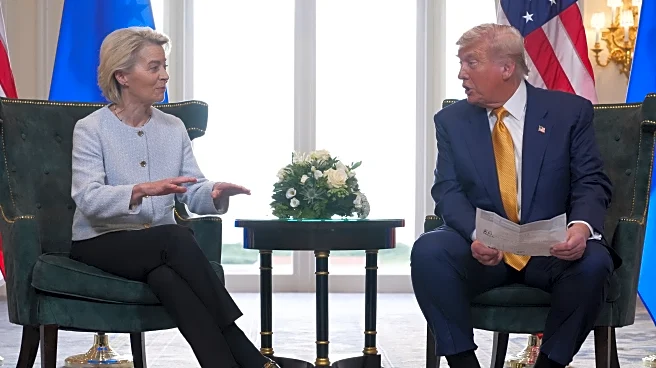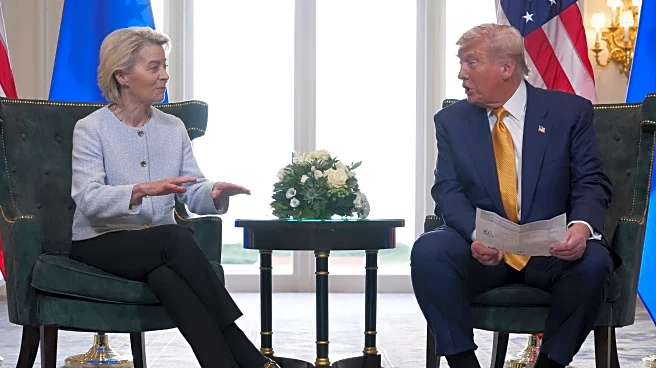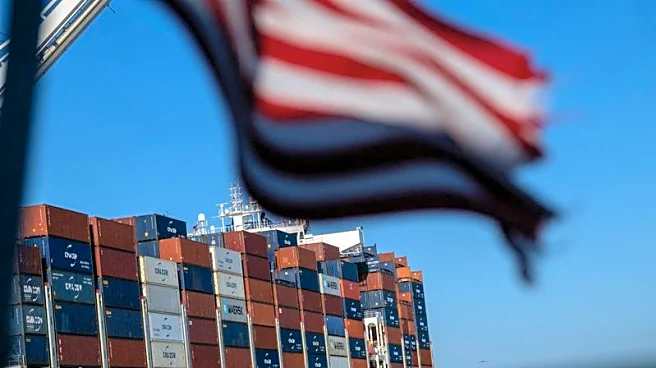What's Happening?
The United States and the European Union have released a preliminary account of their trade deal, which includes a 15% import tax on 70% of European goods exported to the U.S. This agreement marks a significant shift in the transatlantic trade relationship, which is the largest bilateral trading relationship globally, involving $2 trillion in annual business. The document, however, is not legally binding and leaves several key areas, such as wine, spirits, and steel, unresolved. The deal includes a zero tariff rate on U.S. cars and other industrial goods exported to the EU, with exceptions for aircraft parts and pharmaceuticals. The agreement also outlines nonbinding commitments for the EU to purchase $750 billion in U.S. energy and for EU companies to invest $600 billion in the U.S. by 2028.
Why It's Important?
This trade deal is crucial as it aims to stabilize the transatlantic economic relationship, which has been strained by previous tariff disputes. The agreement is seen as a political commitment to avoid a trade war, which could have led to higher tariffs and slowed economic growth. The deal is expected to benefit American workers and industries by opening the EU's $20 trillion market. However, the higher tariffs could lead to increased consumer prices in the U.S. and have sparked criticism from European businesses and member governments. The deal's success hinges on further negotiations to potentially exclude more goods from the 15% tariffs, providing relief to sectors like wine and spirits.
What's Next?
Further negotiations are anticipated to address unresolved issues such as tariff exemptions for wine, spirits, and steel imports. The EU aims to introduce legislation to implement its part of the deal by August 1, which would allow the lower tariff on cars to apply retroactively. The EU has suspended retaliatory tariffs on U.S. goods until February 5, 2026, providing a temporary reprieve for American distillers. The ongoing talks will determine whether these tariffs can be permanently reduced, offering certainty for future export and job growth.
Beyond the Headlines
The deal highlights the complexities of international trade negotiations and the balance between economic interests and political commitments. It underscores the importance of maintaining stable trade relationships to prevent economic disruptions. The agreement also reflects broader geopolitical dynamics, as both the U.S. and EU seek to strengthen their economic ties amidst global uncertainties.













